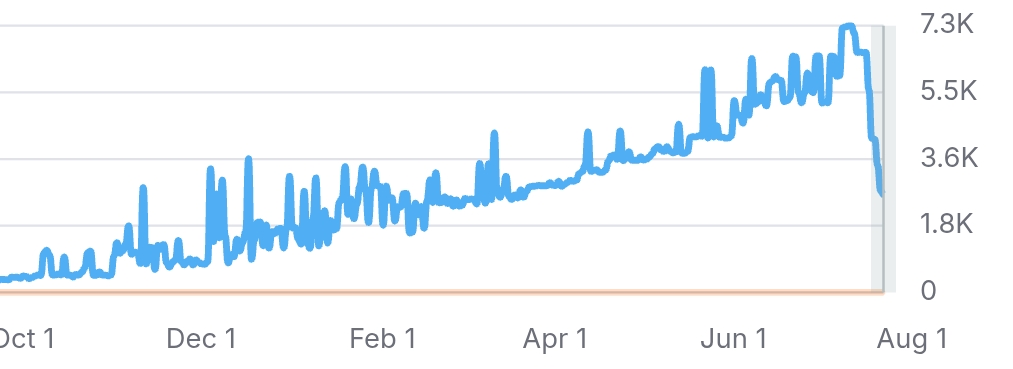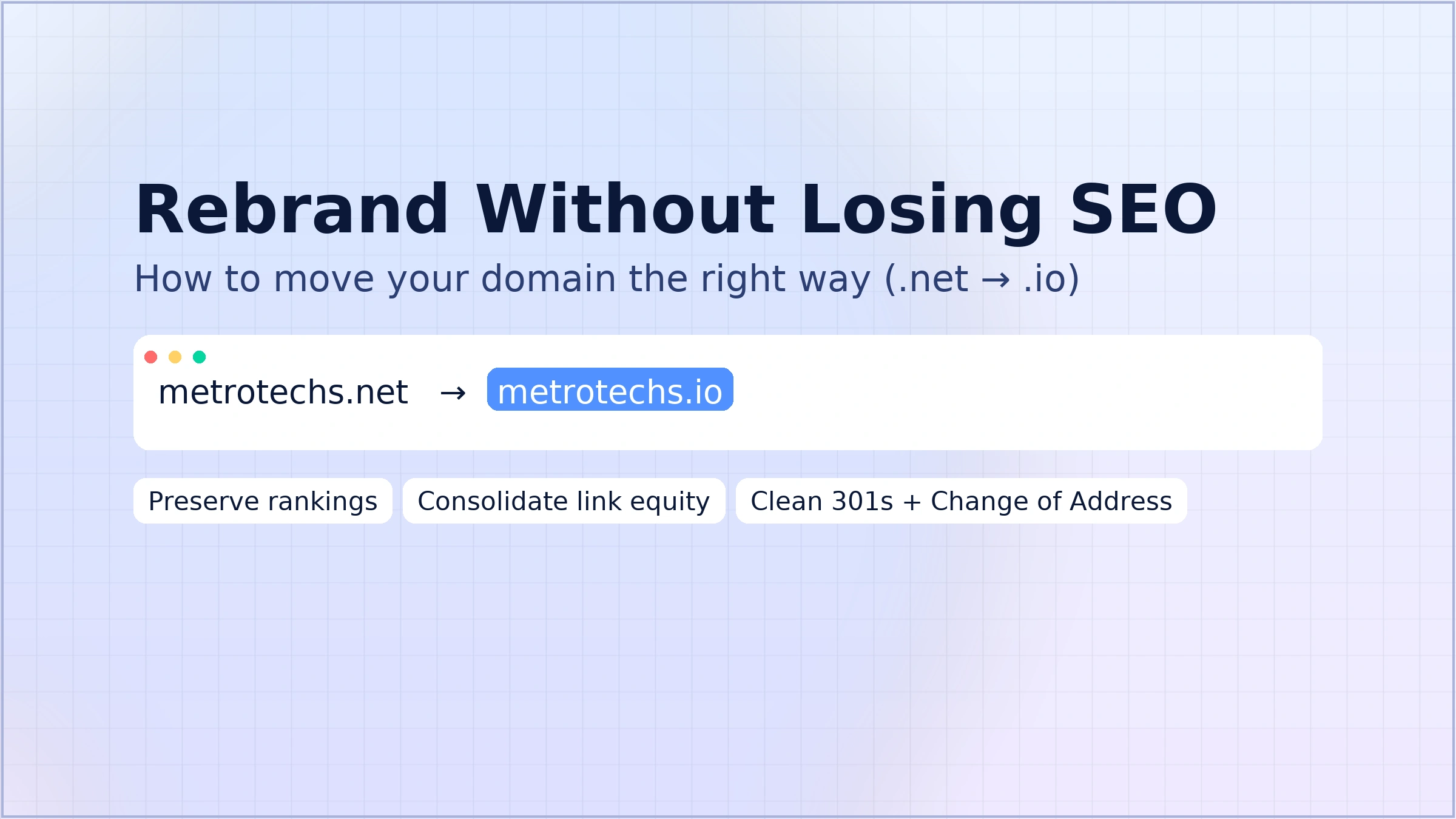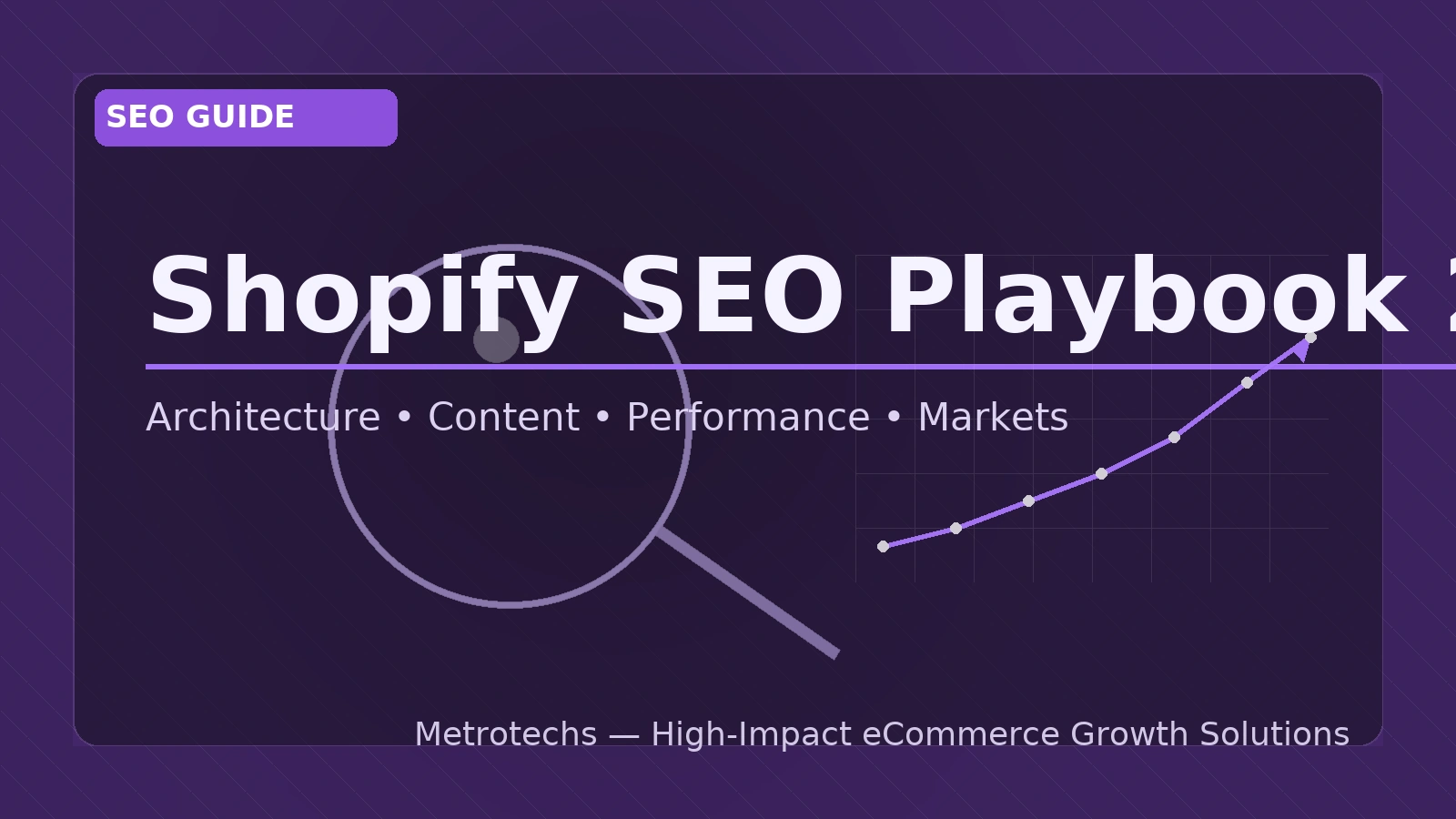TL;DR
Technical SEO is the scaffolding that lets your content, products, and brand scale in search. For e-commerce, it’s the difference between a site Google can crawl, index, and trust—and one it can’t. At Metrotechs, we engineer the stack (architecture, speed, schema, sitemaps, and safeguards) so category and product pages stay discoverable and competitive, even as catalogs, prices, and inventory change daily.
Why Technical SEO Matters More for E-Commerce
E-commerce sites are living systems: thousands of SKUs, filters, seasonality, and constant content churn. That creates three chronic risks:
-
Crawl waste: endless filter URLs and faceted pages soak up crawl budget.
-
Index bloat: duplicates and thin variants push down your best pages.
-
Volatile UX signals: LCP/CLS/INP swing as you add scripts, apps, and A/B tests.
When we stabilize these, rankings rise—and stay up. (In one case study, Metrotechs helped drive >800% keyword expansion after hardening the technical foundation and scaling content.)
The Technical SEO Pillars (E-Commerce Edition)
1) Crawlability & Index Management
-
Robots & meta directives: Disallow crawl traps (e.g.,
/filter?,/sort=), noindex thin or duplicate pages (session IDs, print views), and allow essential faceted pages with unique value. -
Clean, canonical URLs: One canonical per product/variant strategy; strip tracking parameters with canonicals.
-
Sitemaps at scale: Split into logical files (products, categories, blog) and update on publish/stock change.
-
Log-file analysis: See where Googlebot spends time, then fix waste.
2) Architecture & Internal Linking
-
Shallow, logical hierarchy: Home → Category → Subcategory → Product.
-
Pagination that preserves equity: Avoid infinite scroll without proper paginated URLs and strong linking. (Google deprecated
rel=prev/nextsignals; good pagination still matters.) -
Facet containment: Only index facets with real search demand (e.g., “/rifle-scopes/first-focal-plane/”), block the rest.
3) Performance & Core Web Vitals
-
Server-side rendering (SSR) or static generation for key templates; avoid shipping unnecessary JS.
-
Edge caching + image optimization: WebP/AVIF, responsive sizes, smart preloading of LCP image.
-
Measure what Google measures: LCP, CLS, and INP (which replaced FID). We target pass rates >85% across device cohorts.
4) Structured Data (Schema)
-
Product: name, brand, SKU, GTIN/MPN, price, availability, condition, reviews.
-
BreadcrumbList, ItemList, FAQ where relevant.
-
Automated schema that updates with inventory, pricing, and promotions.
5) JavaScript & Headless SEO
-
If you’re headless (Next.js, React, etc.), ensure SSR/SSG for categories and products, expose HTML on first paint, and confirm bots can fetch-render without auth or blocked assets.
6) Security & Reliability
-
HTTPS everywhere, HSTS, and clean redirect chains.
-
Zero-404 policy: new releases can’t add orphaned or broken routes.
-
WAF/CDN (e.g., AWS + CloudFront) to keep bots efficient and site fast under load.
7) Internationalization (if applicable)
-
Proper locale URLs and
hreflangpairs, language-specific sitemaps, and consistent currency handling.
E-Commerce Pitfalls We See (And Fix)
-
Variant duplication: Each color/size gets a URL with near-identical content.
-
Fix: Canonical to the primary variant, expose variant data in schema, and let users switch variants without spawning crawl traps.
-
-
Filter explosions:
/scopes?brand=arken&color=black&mag=6-24&sort=pricemultiplied 10,000 ways.-
Fix: Pre-approve indexable facet combos; disallow the rest; use canonical to canonical category.
-
-
Out-of-stock soft 404s: Google downranks pages with “dead” UX.
-
Fix: Keep product live with alternatives, waitlist, and structured data
availability=OutOfStock(then re-submit in sitemaps when back).
-
-
JS-only content: Rendered titles/descriptions that never reach HTML.
-
Fix: SSR; confirm with “View Source” that core content is present.
-
How Metrotechs Keeps Your Pages at the Top
Our Playbook (Rinse-and-Repeat Every Month)
-
Crawl & Map
-
Full-site crawl (hundreds of checks), log-file pull, Search Console export.
-
Identify crawl traps, index bloat, thin content, duplication, template inconsistencies.
-
-
Index Management
-
Robots rules and
noindexfor low-value paths; canonicals for duplicates; parameter handling strategy. -
XML sitemaps by content type with lastmod hints.
-
-
Template Hardening
-
Standardize H1/Title/Schema for categories/products; consistent breadcrumb markup; fix pagination; improve internal links.
-
-
Performance Engineering
-
Image pipelines (WebP, responsive
srcset), preconnect/preload, reduce render-blocking JS/CSS, Redis/object caching, CDN edge rules. -
Monitor LCP/CLS/INP using field data (CrUX/GA4) and lab audits (Lighthouse).
-
-
Automated Schema at Scale
-
Product, Offer, Review, Breadcrumb, FAQ where relevant—kept in sync with inventory and price feeds.
-
-
Release Hygiene
-
Pre-deploy SEO checks (no accidental noindex, schema validation, link integrity), 301 map tests, and rollbacks if metrics dip.
-
-
Monitoring & Alerts
-
Search Console coverage and enhancement alerts, 404/5xx spikes, CWV regressions, structured data errors.
-
Weekly delta reports in Looker Studio; monthly strategy recaps.
-
-
Opportunity Sprints
-
Intent-gap analysis for categories, “best/compare” collections, and internal link boosts to rising products.
-
Test titles/meta for CTR lifts without keyword stuffing.
-
What This Looks Like in Practice
Example JSON-LD for a Product
Canonical & Facets (Category Example)
-
Indexable:
/rifle-scopes/first-focal-plane/(demand + unique listings) -
Noindex:
/rifle-scopes?sort=priceand/rifle-scopes?view=grid -
Canonical: All tracking/UX params → canonical to the clean category URL.
Robots.txt Sketch
(We tailor this to your stack so we don’t block assets Google needs for rendering.)
Performance Targets We Hold Ourselves To
-
Crawl waste: <10% of bot hits on non-indexable templates
-
Indexable coverage (GSC): >95% of submitted pages valid
-
CWV pass rate: >85% across mobile users for LCP/CLS/INP
-
Error budgets: 404s <0.5% of all requests; 5xx spikes investigated within hours
Tooling We Bring
-
GA4 + Looker Studio for field CWV and SEO dashboards
-
Google Search Console for coverage/rich results
-
Crawlers (Screaming Frog/Sitebulb) and server/CDN logs (AWS/CloudFront)
-
Automations: schema generation, sitemap jobs, release checks, and 404/redirect monitors
-
Infra: AWS-first (EC2/Lightsail, S3, CloudFront, WAF, Redis), plus WordPress/WooCommerce or headless stacks
Quick Technical Wins (Often in Week One)
-
Convert hero/LCP images to WebP with explicit width/height and preload the LCP resource.
-
Remove unused render-blocking CSS/JS; defer non-critical scripts (reviews, chat) after interaction.
-
Standardize product schema; fix invalid GTIN/price/availability.
-
Parameter handling: canonicalize
?sort=,?view=,?utm=; noindex low-value filtered pages. -
Repair redirect chains and eliminate stray 404s.
-
Submit fresh sitemaps after major inventory changes.
Ongoing Maintenance Checklist (Monthly)
-
Re-crawl & compare diffs (new 404s, new duplicate titles, template regressions)
-
Review GSC Coverage/Rich Results and Core Web Vitals trends
-
Validate schema across page cohorts
-
Audit internal linking to rising products and seasonal collections
-
Refresh XML sitemaps, check lastmod stamps
-
Verify security (HTTPS, HSTS, mixed content, WAF rules, bot noise)
The Metrotechs Difference
We’re not “set it and forget it.” We engineer the platform, automate the checks, and treat every release like an SEO-sensitive deployment. That’s how we keep category and product pages consistently at the top of SERPs—even when assortments, seasons, and competitors change.
Want your catalog to rank like a machine? Let’s harden your technical foundation and scale the wins.





